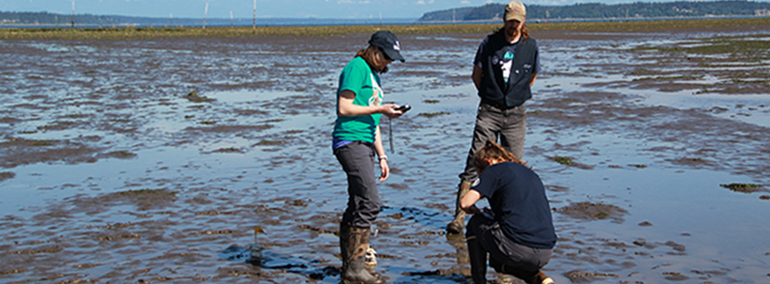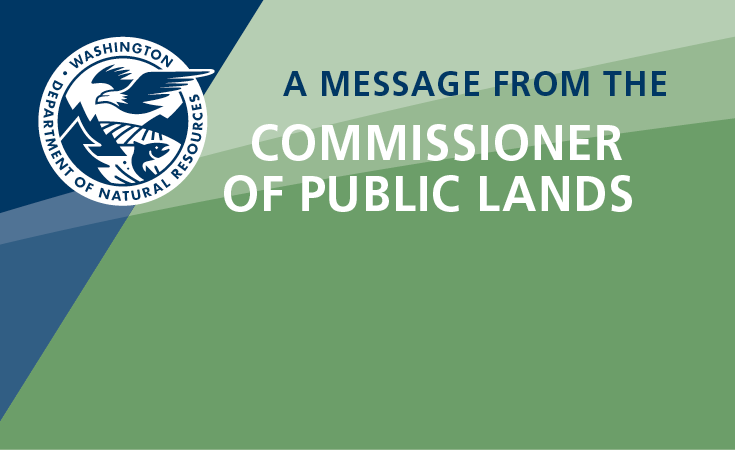Climate Resilience & Community Science
 The Aquatic Assessment and Monitoring Team (AAMT) is working to increase climate resiliency throughout the Salish Sea. One of the ways that AAMT aims to do this is by establishing a network of community scientists working to research, understand, and advocate for their local watersheds and estuaries.
The Aquatic Assessment and Monitoring Team (AAMT) is working to increase climate resiliency throughout the Salish Sea. One of the ways that AAMT aims to do this is by establishing a network of community scientists working to research, understand, and advocate for their local watersheds and estuaries.What is climate resilience?
DNR defines climate resilience as “Being prepared for, and adapting to, current and future climate-related changes”. Climate resiliency encourages us to understand and prepare for the impacts of our quickly changing climate.
AAMT is actively working to understand the effects of climate change on local aquatic lands through research and community-based science.
As an agency DNR is working to build climate resiliency in our communities. To learn more about DNR’s goals in regards to climate resiliency please read DNR’s Plan for Climate Resilience
How can community science help build climate resilience?
Community scientists play an essential role in assisting in ongoing research projects and in developing new research ideas. Changes in ecosystems, watersheds, and communities are noticed the most by those that live in them. Community science aids members of the local community in learning and practicing scientific research, which allows for a greater understanding of the effects of climate change. Measuring, observing, and recording local impacts of climate change allows for greater agency and action among community members.
Climate Resilience Educational Curricula
The Washington State Department of Natural Resources' AAMT received funding from the Environmental Protection Agency's National Estuaries Program to develop three curricula (elementary, middle and high school). The curricula are designed to bring climate science education to Washington students through hands-on field experience and data collection at ANeMoNe sites. The curricula can be viewed and downloaded here.
Climate Resilience Youth Internship
During the summer of 2022, the Department of Natural Resources' AAMT and the Hood Canal Salmon Enhancement Group (HCSEG) partnered to introduce a Climate Resilience Youth Internship Program. This program is intended to expose high school youth to the fundamentals of climate science through hands-on experience with scientific monitoring and field data collection. Through this internship, youth learn how climate effects can be monitored in their local estuary and freshwater streams. They learn principles of environmental science and environmental justice, gain marketable skills, are mentored by scientists and paid for their work. A task is provided for interns to document the skills they've learned for reference when building resumes. By encouraging climate literacy and skill development, we hope to continue to equip youth with workforce relevant skills and empower them to engage in climate solution actions in their own communities.
Click here to learn more about the internship or to apply for this upcoming summer internship.
Being a community scientist with AAMT can look like:
- Participating in fieldwork at local aquatic research and monitoring sites
- Ensuring function of aquatic sensors
- Conducting nearshore and riparian vegetation surveys
- Documenting bird diversity and behavior
- Monitoring benthic invertebrate abundance
- Attending educational events and webinars
- Proposing new research topic ideas based on field observations
- Writing pieces for the AAMT Community Science Newsletter
Interested in becoming a community scientist? Please see the Community Scientist Toolbox for more information!


